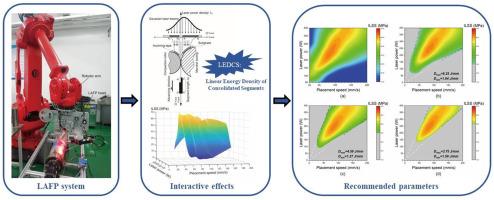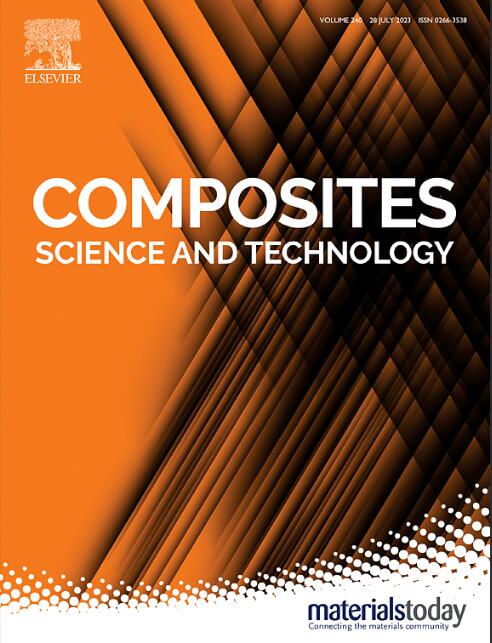工艺参数对激光辅助自动纤维铺放原位固结 CF/PEEK 复合材料层间剪切强度的影响
IF 9.8
1区 材料科学
Q1 MATERIALS SCIENCE, COMPOSITES
引用次数: 0
摘要
系统地研究了贴装速度、激光功率、工具温度、压实力和胶带张力等工艺参数对激光辅助自动纤维贴装原位加固 CF/PEEK 组件层间剪切强度的影响。为了研究这些参数的单独效应和交互效应,制定并进行了两组正交实验,得出的最大 ILSS 为 70.3 兆帕。方差分析显示,激光功率和贴片速度之间的交互影响最为显著,其次是工具温度、压实力和胶带张力。此外,还引入了加固段线性能量密度(LEDCS)的概念,以表征和量化激光功率与贴片速度之间的关系。预计在 1.58 J/mm 至 3.75 J/mm 的 LEDCS 范围内,ILSS 值将超过 50 MPa。最后,通过扫描电子显微镜阐明了样品的失效模式。本文章由计算机程序翻译,如有差异,请以英文原文为准。

Influence of process parameters on the interlaminar shear strength of CF/PEEK composites in-situ consolidated by laser-assisted automated fiber placement
The influence of process parameters, including placement speed, laser power, tooling temperature, compaction force and tape tension, on the interlaminar shear strength of CF/PEEK components in-situ consolidated by laser-assisted automated fiber placement was systematically investigated. To examine both the individual and interactive effects of these parameters, two sets of orthogonal experiments were formulated and conducted, yielding a maximum ILSS of 70.3 MPa. Analysis of variance revealed that the interaction between laser power and placement speed had the most significant effect, followed by tooling temperature, compaction force and tape tension. Furthermore, the concept of linear energy density of consolidated segments (LEDCS) was introduced to characterize and quantify the relationship between laser power and placement speed. ILSS values exceeding 50 MPa were predicted within the LEDCS range of 1.58 J/mm to 3.75 J/mm. Finally, the failure modes of the samples were elucidated through scanning electron microscopy.
求助全文
通过发布文献求助,成功后即可免费获取论文全文。
去求助
来源期刊

Composites Science and Technology
工程技术-材料科学:复合
CiteScore
16.20
自引率
9.90%
发文量
611
审稿时长
33 days
期刊介绍:
Composites Science and Technology publishes refereed original articles on the fundamental and applied science of engineering composites. The focus of this journal is on polymeric matrix composites with reinforcements/fillers ranging from nano- to macro-scale. CSTE encourages manuscripts reporting unique, innovative contributions to the physics, chemistry, materials science and applied mechanics aspects of advanced composites.
Besides traditional fiber reinforced composites, novel composites with significant potential for engineering applications are encouraged.
 求助内容:
求助内容: 应助结果提醒方式:
应助结果提醒方式:


